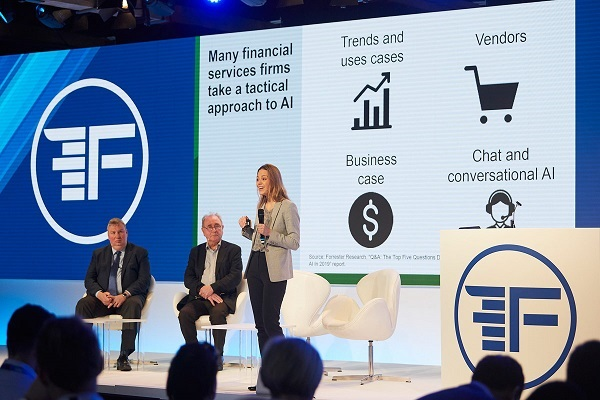Ever since the inception of cloud-computing solutions, several sectors, including banks and Fintech, are slowly migrating to it. With numerous benefits, the cloud is turning out to be the ultimate storage option for your data. Even for personal storage, platforms, such as Google Drive or Dropbox are leading the race.
Migrating from traditional data centers to the cloud might sound daunting but the endless benefits makes it an option to consider.
What are cloud computing technologies?
In layman’s term, cloud is a form of storage which allows users to store data on the internet.
Cloud computing is the delivery of computing services over the internet; services like servers, software, networking, and analytics.
The three major services classified under the cloud environment are SaaS, IaaS and PaaS
- SaaS (Software as a service): Delivering software applications using the internet on a subscription basis
- IaaS (Infrastructure as a service): Using IT infrastructure, data storage, operating systems with IP connectivity
- PaaS (Platform as a service): On-demand environment for developing, delivering, and managing applications.
The evolution of cloud computing has enabled several industries to create a platform that is customer-centric with great security and high efficiency.
Banking and FinTech
The banking and finance sectors have seen phenomenal growth over recent years. This is due to the growth in FinTech as well as technologies such as machine learning, artificial intelligence and cloud computing. With development of cognitive computing abilities, banks are changing the way they interact with customers.
AI and cloud computing also help banks eliminate redundant tasks to a more innovative style of work. Cloud computing services have also evolved into a one-stop solution for any problems associated with data storage. Other services include storing, managing, and accessing information. By teaming up with FinTech companies that utilize secure cloud-based technology, banks can also find unique solutions for better user experiences, personalization, and automation. AI-led personalization engine, maya.ai, is one such platform.
The top cloud providers are Microsoft Azure, Amazon Web Services, Google Virtual Cloud and IBM Bluemix.
Benefits of using cloud in banking
As banks are slowly making a move to the cloud, it’s important to understand the different benefits.
Improved data security
Data security breaches have severe consequences for both users and vendors. Data leaks can cost millions of dollars in revenue. Since most banks still rely on on-premise systems, beach in data security is on the rise.
Cloud technology has paved the way to a successful alternative that prevents harm to data. With state of the art equipment and up to date software, the cloud provides a great platform to safeguard data. Management of financial data would require banks to select cloud providers that meet criteria like:
- Certifications and standards
- State of the art technology
- Reliability and performance
- Migration support
- Service dependencies
- Partnerships
Reduced infrastructure costs
A big problem with on-premise systems is the complex adaptability to organizational changes. Changes to the IT infrastructure, hiring, and workload management, require adequate time to execute.
With banks constantly expanding, a cloud system can adapt to these needs quickly. By migrating, changes in the IT infrastructure becomes manageable. Organizations comfortably scale up their needs immediately.
High efficiency
The efficiency of a financial institution increases multi-fold when in a cloud environment . By hosting data on cloud, banks can enjoy benefits like:
- Disaster recovery
- Quality control
- Loss prevention
- Flexibility and mobility
- Sustainability
Any challenges that arise can be resolved quickly. Organizations can focus on decreasing fixed and variable expenses too. This helps with the financial health and the overall infrastructure.
Payment gateways that are not on cloud suffer from slow and complicated payment processes. Slow transactions happen due to different technologies used between the buyers and sellers. By migrating the whole system to cloud, both buyers and sellers are brought together on a shared application. This will improve transaction speeds and makes tracking data easier.
Hosting made easy
For secure transactions and a smooth customer experience, banking portals will need 100% uptime. While on-premise systems have worked well, it will need regular maintenance to prevent any disruption. Even small issues can have adverse effects on the way bank functions. Migrating to a cloud will guarantee 99.99% uptime. The servers will be available through maintenance and the maximum uptime factor help with quick payments and fund transfers.
Software applications
Applications such as ERP and CRM (Customer relationship management) are mostly hosted on the cloud. As these applications are a part of the SaaS model, vendors have complete control over them. This will help in improving the support system.
What stands between cloud and banks
While cloud seems like the way to go, there are a few limitations that might prevent financial institutions with the switch. Due to security concerns, many banks are hesitant about migrating. The security of financial information is of utmost importance, so it’s important for banks to use encrypted cloud service to manage risks. The use of shared services or a public cloud is not recommended.
The future is in the clouds
Migrating to the cloud can be taxing but through transition the process becomes easy. As cloud is slowly becoming a high priority for banks, this move will provide an edge in optimizing operating and capital expenses. The benefits are apparent, and the cost savings can be significant. Cloud computing will elevate how banks function and make the process smoother for both clients and users.























![Growth and future of Fintech: From Wire Transfer to Blockchain [Infographic]](https://crayondata.ai/wp-content/uploads/2019/02/banking1-1.jpg)